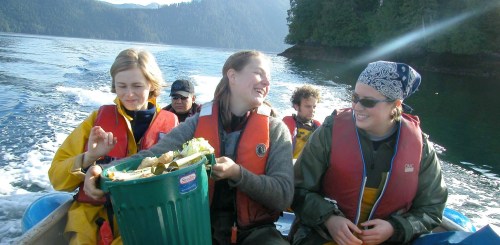I am doing fieldwork away from the internet for a few weeks in southern Haida Gwaii, so there will be no updates until late in June. If you would like to be notified when the blog resumes, then add your email to the subscription list by clicking the button to the right reading “subscribe by email.” You won’t get spam and your email is hidden from all other users other than me. Well, me and my friend and blog-sitter, Sara Perry.
Sara also uses the wordpress software, and she has kindly agreed to keep an eye on this site, trimming out spam and making sure it doesn’t get over-run by weevils. Sara is a Ph.D. candidate at my alma mater, and her blog, The Archaeological Eye, complements a very cool project that she is closely involved with: Visualization in Archaeology. Thanks Sara!











